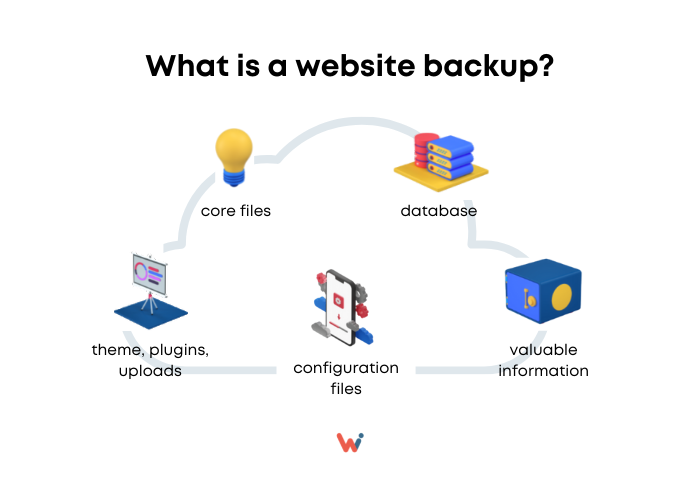
Web servers allow data exchange between computers and the Internet. They have software that determines what files are available to users. They are a great example of a client/server relationship. Web server software and hardware are required for every computer that hosts a web site. In some instances, web server software and hardware are simply called "servers".
Concurrency
Scaling your web app is all about how much concurrency a server can handle. It is important that you understand that your site's speed will not be determined by how productive the front-end is. However, the number of concurrent users is what is the bottleneck. To determine the optimal resources for a site's website, web servers use estimations about concurrent user counts. If the estimation is wrong, your application might slow down to a crawl.

Configuration
Configuring web servers is crucial in creating a secure and efficient web hosting environment. Out-of-the-box configurations are often insecure, so administrators should take extra precautions when configuring their servers. Many network services are included in typical configurations, including remote registry services and print server services.
GET method
If you are using a web server to send data to another site, the GET method is the way to go. This method is cacheable, unlike the POST. It allows you to send large data sets and ASCII data. It is not recommended for sensitive information like images and word documents. There are also some disadvantages to the GET method. It is not compatible for many firewalls. Also, it is slow to upload large binary files.
Nginx
Nginx is a lightweight, high-performance web server. It's an ideal choice for websites with high traffic. Nginx comes with some limitations. Nginx does not allow users to specify a location for their configuration file system directory. Instead, it responds to various requests by configuring itself.

Apache
Apache is an open source web server that allows you to create and manage multiple websites on the same server. This web server is compatible with many languages and includes many open-source modules you can add to improve your website's functionality. It is compatible with many operating systems including Unix and Linux.
FAQ
What platform is the best to design a site?
WordPress is the best platform for creating websites. It provides all the features you need to create a professional-looking site.
Themes are easy-to-install and customizable. There are many themes to choose from online.
You can also install plugins to increase functionality. They allow you add buttons to social media and form fields, as well as contact pages.
WordPress is very user-friendly as well. You don't even need to know HTML code in order to modify your theme files. You just need to click on the icon and choose what you want to modify.
There are many other platforms available, but I recommend using WordPress because it's been around for years and is still used by millions worldwide.
Is WordPress a CMS?
Yes. It is a Content Management System (CMS). CMS allows you control your website content using a web browser and not an application like Dreamweaver, Frontpage or Frontpage.
WordPress is free! You don't have to pay for anything other than hosting, which your ISP usually provides.
WordPress was initially designed as a blogging platform but now offers many different options, including eCommerce sites, forums, membership websites, portfolios, etc.
WordPress is simple and easy to install. Download the file from their website, and then upload it to your server. You can then visit your domain name using your web browser to log in to your new website.
After installing WordPress you will need to create a username/password. After logging in, you will see a dashboard that allows you to access all your settings.
This is where you can add pages or posts, images and links to them. If editing and creating new content is easier for you, skip this step.
You can also hire a professional web design firm to help you with the whole process.
What is responsive web design?
Responsive Web Design is a method of designing responsive websites. It allows content to display on all devices (desktop computers, tablets and smartphones), so that it can be viewed easily on any device. This allows users to simultaneously view a website from one device while still being able to access other features, such as navigation menus and buttons. The goal of RWD is to ensure that when a user views a site on any screen size, they view the exact version of the site.
You would, for example, want to make sure that a customer can view your website even on a mobile device.
A responsive site will adapt to the device used to view it. So, viewing the site on your laptop will look like a standard desktop website. It will look different if you view the page from your phone.
This means you can make a website that looks amazing on all types of devices.
Statistics
- In fact, according to Color Matters, a signature color can boost brand recognition by 80%. There's a lot of psychology behind people's perception of color, so it's important to understand how it's used with your industry. (websitebuilderexpert.com)
- It's estimated that in 2022, over 2.14 billion people will purchase goods and services online. (wix.com)
- Is your web design optimized for mobile? Over 50% of internet users browse websites using a mobile device. (wix.com)
- Studies show that 77% of satisfied customers will recommend your business or service to a friend after having a positive experience. (wix.com)
- It enables you to sell your music directly on your website and keep 100% of the profits. (wix.com)
External Links
How To
How do you become a web developer
A website isn't just a collection HTML code. It's an interactive platform that lets you communicate with users, and offer valuable content.
A website is more than a medium for delivering information; it is a portal to your business. Customers should find the information they are looking for quickly and efficiently. It should also show them how to interact with you company.
The best websites make it easy for visitors to find the information they seek and then to leave.
This requires you to acquire technical skills as well design aesthetics. It is necessary to be familiar with HTML5 and CSS3 coding, as well as the most recent developments in JavaScript and other programming languages.
InDesign, Photoshop and Illustrator are all tools that can be used to create and edit websites. You will also need to create your style manual, which covers everything from fonts to colors and layout.
If you're interested in becoming a web designer, start by reading articles on the topic, taking online courses, or enrolling in college programs.
Although your degree may take months, or even years, once you earn it you will be ready for the workforce.
And don't forget to practice! Designing will improve your ability to build great websites.